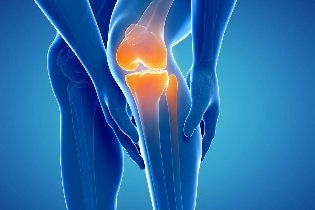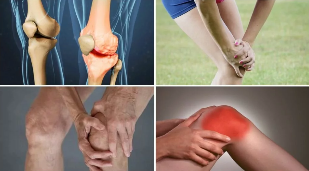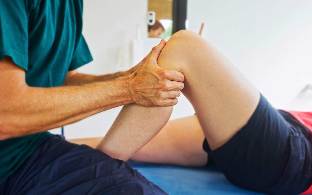Osteoarthritis is a dystrophic change of the articular cartilage not inflammatory in nature. This process occurs in most cases as a result of the natural aging process of the body.
According to the statistics, osteoarthritis is considered to be a relatively common disease, because you are suffering according to various estimates, between 10% to 15% of the inhabitants of the different countries.

This disease is typical for the age group of 45 years and more. Although, there are exceptions, when the osteoarthritis occurs in less age group of people, as a result of traumas, serious illnesses, fractures, typical of athletes in a greater extent.
In General, arthritic pain patients experience in the location, of the loads, but if you sit or symptoms subside lie in a comfortable Position for the affected limb as pain. With the progression of the disease, the characteristic crunch of the joints, increases the Amplitude of the normal movements of the joints, reduces the deformation of the joint components occurs.
Osteoarthritis – what is it?
What causes osteoarthritis and what is it? The disease develops due to metabolic disorders in the joint, which in turn leads to the cartilage start to lose their elasticity. This can help the complete or partial loss of the composition of the proteoglycans of the cartilage, this usually happens through a rather deep cracks in the cartilage.
- Primary osteoarthritis begins for no apparent reason and unchanged joint beats the cartilage in many joints; it is more common in persons over 40 years. The primary osteoarthritis is a result of the violation of the conditions in the cartilage of processes of synthesis and Degeneration, and is accompanied by a disturbance of the function of the chondrocytes. In the cartilage in the arthritic changes in the processes of destruction dominate.
- The main causes of secondary osteoarthritis are significant changes in the metabolic processes: blood circulation, metabolism and lymphatic drainage, hormonal disorders in the appropriation of the necessary joint substances. Hormonal changes, the natural changes in the hormone levels to come to osteoarthritis is common in women at higher and high age, when.
In the risk group of people include:
- with overweight;
- with hereditary diseases of the;
- older people;
- with specific occupations;
- with metabolic disorders in the body;
- with Mangold in trace elements;
- the injury to the spine;
- with some sports.
Cabal osteoarthritis consists in the fact that the pathological changes in the cartilage of the affected joint is manifested a long time not any symptoms – pain and difficulty in breathing movements are noticeable only in the very Moment when the destruction of the periosteum is reached, the directly under the cartilage.
Osteoarthritis 1, 2 and 3 degrees
There are three degrees of osteoarthritis of the joints:
- 1 the degree of the disease is almost without any noticeable symptoms. Only occasionally, the potential for pain at movement, or other types of physical activity. Already in the first stages of the disease, pathological changes occur in the synovial fluid of the joint, this muscle loosens apparatus, but no changes.
- 2, the degree of osteoarthritis of the the beginning of the destruction of the joint, the first osteophytes appear. The pain is more bearable, but more pronounced. Clearly audible crunching in the affected joints. It comes to disturbances of the function of the muscles in a kind of violation of the neurotrophic Regulation.
- 3, the degree of osteoarthritis – the joint cartilage is diluted, there are extensive lesions of the destruction. Marked in red, significant deformation of the acetabulum of the square with the change of the axis of the limb. Due to a violation of the normal ratio tissue between the anatomical structures of the joint and the extensive pathological changes in the connective, the bands are insolvent and shortened, which develops a pathological mobility of the joint in combination with the restriction of the natural range of motion. Contractures and subluxations arise. Periarticular muscles are stretched or shortened, the ability to reduce weakened. The nutrition of the joint and the surrounding tissue are disturbed.
The course of the disease is characterized by stages of deterioration and periods of Remission. This makes it difficult for an independent diagnosis of osteoarthritis, focusing only on their own feelings. Therefore, it is necessary for the clarification of the diagnosis to the doctor.

Signs
Osteoarthritis has a certain the first signs, on the basis of their classification, but there is also a generalized list:
- Pain aggravated in wet weather and by low temperatures;
- Joint increases in extent due to deformation and osteophytes;
- The temperature of the skin around the diseased joint increases. It may be a General increase in temperature.
- The joint begins to swell, you experience swelling and seals;
- To hear of the effort and the work of the joint and perceived crunch and quiet of the bony formations of the friction.
In later stages, pain pressure occur, and in peace because of the Stagnation of the blood and the improvement of the intraosseous.
Symptoms of osteoarthritis
Arthritis belongs to the category of chronic diseases. Sometimes, the disease can go unnoticed for years, only occasionally reminded of the pain when pressure is applied to the joint or false movement.
But it also happens that the disease develops rapidly to severe stage in just a few months. In any case, it is important to keep in mind, if the arthritis is not treated, his symptoms will grow with time, deterioration in the quality of life, and in severe cases, the resulting disability and immobilization.
So, if the main symptoms of osteoarthritis are the following:
- Aching pain in the joint. It shows itself especially in the case of different types of loads on the affected joint, while the foot of the stairs.
- Pain and grinding in the joint. Pain in the limbs in colds are manifested. Crunching not initially strong, but when left untreated, with time it will hear and the environment.
- The emergence of swelling. This Symptom is typically a disease of the joints – Arthritis. But in the case of arthritis swelling only occurs with exacerbations, and accompanied by acute pain and pain at the end. She's very striking and brings a lot of inconvenience.
Sometimes the pain can increase in the evening. Sometimes the pain in the joint is very active, the Manifestation is dependent on the load. In juvenile arthritis, the development of great physical stress or injury can get.
Diagnosis Of Osteoarthritis
The diagnosis is based primarily on the Definition of a such predisposing factors, such as the emergence of pain and discomfort in the movements of the joints. Upon the occurrence of the above-described symptoms of the disease, maybe a radio logical, radionucleides and morphological studies.
All investigations are only in the clinical setting, and opinions in the only qualified professionals. On our site you can always ask about the symptoms, treatment and prevention of osteoarthritis in the comments.
Prevention
Preventive measures for the prevention of osteoarthritis for everyone. A moderate physical stress (it should not cause pain in the joints), a well-balanced diet and daily consumption of all important trace elements and vitamins.
Often relief from the osteoarthritis prevents overweight, so you should be very alert to your diet and, if necessary, to follow a diet.
Also, bear in mind that the arthritis belongs to the category of chronic diseases. In other words, the main criterion of the effectiveness of the treatment on the achievement of longer Remission and improve the patient's condition.

The treatment of osteoarthritis
In the case of a certain treatment for osteoarthritis at the Moment – it is a serious and urgent Problem. And although the number of medicines used for osteoarthritis, is increasing constantly, however, you have only a symptomatic effect. And yet none of the drugs has not been a panacea in the treatment of the joints.
Plan and methods of treatment depend on the stage and the symptoms of osteoarthritis, the pain often originally relieve, as in the second and third stage of the disease can be very painful. Also possible Anti-inflammatory therapy with accompanying inflammation of the joint.
The basic scheme of the pharmacological treatment of osteoarthritis, sets the application:
- NSAIDs with the aim of reducing pain and the elimination of the inflammatory process.
- Drugs from the group of chondroprotectors, consisting of active components such as glucosamine sulfate and chondroitin sulfate.
- In severe cases, you may need to the intra-articular injection of drugs corticosteroids. To eliminate these drugs quickly inflammatory process and normalize the mobility of the affected joint.
- After the elimination of the inflammatory process, it may be necessary intra-eliminates-articular injection of hyaluronic acid as a lubricant and prevents the process of friction of the joints, pain, improves mobility and stimulates the production of hyaluronic acid.
Back in the joint, osteoarthritis is affected to a considerable extent, can only do on the implementation of the surgical operations to joint replacement, no surgical intervention is not yet possible to do this.
The surgical procedure
At an advanced stage of osteoarthritis of the knee, treatment with medications joints may not be effective, and then make a decision about the operational methods of improvement should be.
There are several types of surgical procedures:
- Arthroplasty. Replacement of articular cartilage artificial seal. After surgery significantly reduces pain and increases range of motion.
- Arthroscopy. A long recovery period, is well suited for patients of all age groups. You need to prevent the destruction of the joint. During the surgery, the inflamed areas – this is done with the help of a thin probe, and auxiliary instruments.
- Prosthetics. Replace all of the components of the joint by artificial analogues. By the way, the modern prostheses are made of a special metal that is not rejected by the body. Such transplants are, on average, about ten years. After such procedure, patients can lead a full life.
At home, on doctor's prescription, the Patient to apply a deflecting means in the Form of ointments, rastirok, gels, herbal teas. Good results physiotherapy, acupuncture, leech therapy (leech treatment), as well as Spa treatment in Remission (disease reduction) and with natural mud wraps and mineral baths.
Exercises for the treatment of osteoarthritis
A prerequisite in the treatment of osteoarthritis, the use of different types of exercises to prevent atrophy and weakening of the muscles and ligaments.
Exercises for the treatment of osteoarthritis will be individually for each patient by the attending physician and a physiotherapist. To begin the exercises 5-6 days after the acceptance of the pain syndrome after the deterioration, but not later.
The object of the exercises for the treatment of osteoarthritis of the restoration of joint mobility, Aerobic Training, to increase the strength and flexibility of muscles and joints.
As for the treatment of osteoarthritis folk medicine?
To avoid for osteoarthritis drug treatment, but usually the doctor prescribes a comprehensive treatment, counseling, Folk remedies apply. But you have to know that the treatment of osteoarthritis, including non-traditional medicine, is based on a healthy lifestyle and proper nutrition to all of this people's recipes added.

- Birch leaves, nettle leaves and inflorescence of Calendula in equal parts. In the end, you need two tablespoons. Put the resulting powdered collection in a thermos, pour a Liter of boiling water and leave for the night. The next morning you have to take a half a Cup of broth, four to five times a day. Of course, the inclusion of this recipe is two to three months.
- Egg solution is prepared from fresh egg yolk, mixed with turpentine and Apple cider vinegar in a ratio of 1:1:1. The liquid mix well and RUB it on the affected joint for the whole night. After that, wrap to shawl all wool. It is recommended that you RUB inside of 1 month of 2-3 times a week.
- Celery. 1-2 TSP celery freshly squeezed juice you can drink up to 3 times per day. You can make a decoction. Boil 1 Tbsp. a spoonful of fresh roots in 2 cups of boiling water and let stand under cover for 4 hours. Drink 2 tablespoons 4 times per day 30 minutes before meals.
- You will need a piece of soft fabric made of W without synthetic admixtures and cabbage. For starters, you need to chop the head, then, well, crush it with a mortar or with the hands, it is advisable not to oxidizable dishes. After that, you can press the juice in the juice press. Now we take the prepared fabric and network in the cabbage juice, place this compress on the affected joint. I would also like to mention that the extracted juice can save than three days after the pressing.
- Application of cooked oatmeal gives good results. You take three to four tablespoons of oatmeal with boiling water and boil on low heat for five to seven minutes. The amount of water used should be the provision of a thick porridge, let it cool, and as a compress on the night You will only use recently boiled cereals. Yesterday's porridge compress for not suitable.
- In the pharmacy, the root acquired elecampane. Usually Packed in packs of 50 gr. For the preparation of tinctures need to have half of the packs from the roots of the plants, and 150 ml quality vodka. The ingredients are mixed in a dark bottle and infused for 12 days. RUB prior to bedtime to be performed, and, if possible, tomorrow.
In General, folk medicine, treatment of osteoarthritis will not be able to complete Standard therapies (medication, physiotherapy, Massage, exercise therapy), but it can alleviate the symptoms of the disease significantly, improve, accelerate the effect of other therapies and the recovery.






























